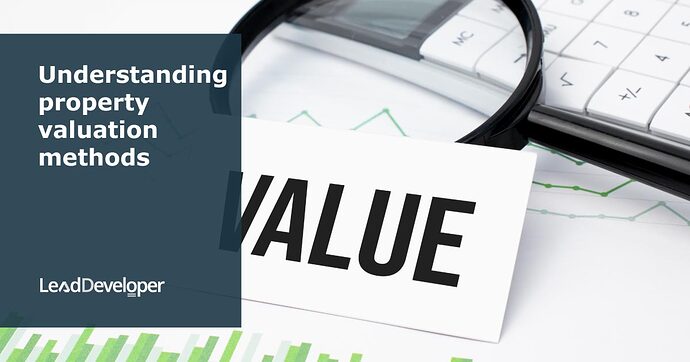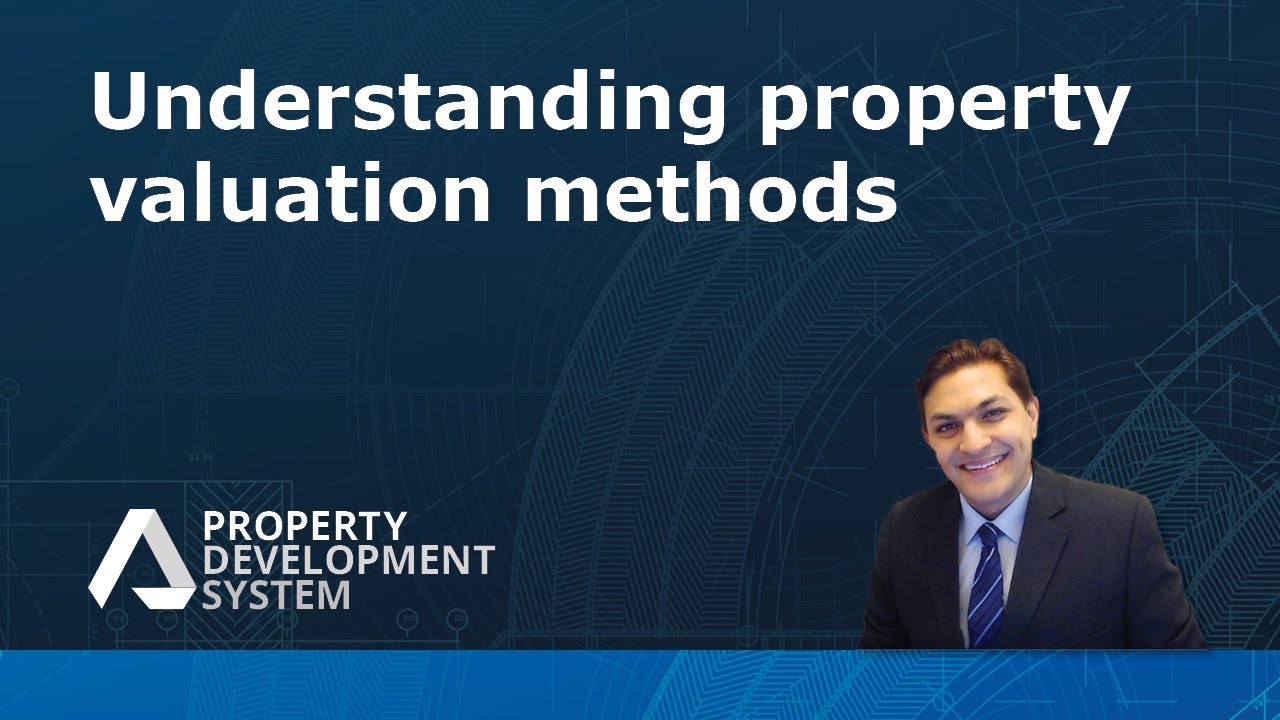Understanding Valuation Methods
The video “Understanding Property Valuation Methods” provides an insightful overview of different techniques used to assess the value of properties. It covers methods such as Comparable Sales, Income Capitalization, Depreciated Replacement Cost, Discounted Cash Flow, and Residual Land Value, explaining how each plays a vital role in property valuation.
Comparable Sales
This method compares similar property sales within the same area to determine a property’s value, focusing on properties with similar characteristics.
Income Capitalization
Utilised mainly for commercial and industrial investment properties, this method calculates value based on the income the property generates.
Depreciated Replacement Cost
Combines land value and improvement costs (such as renovation or development) minus depreciation, offering another valuation perspective.
Discounted Cash Flow (DCF)
Projects the property’s value into the future (e.g., 10 years), then discounts it to present value, considering both revenues and costs.
Residual Land Value (RLV)
Used for projects under two years, based on development margin. It’s a calculation of land value considering the developer’s required return or target hurdle rate.
Frequently Asked Questions
How does the comparable sales method adjust for differences in property features?
The Comparable Sales method adjusts for differences in property features by comparing properties that are similar in characteristics such as location, size, and type within the same area. It specifically looks at sales of properties like three-bedroom townhouses in the same suburb or immediate vicinity. This method allows valuers to ascertain a property’s value by examining what similar properties are selling for and adjusting for unique features or differences to ensure a fair and accurate valuation. This approach is widely used for its direct reflection of the current market trends and property demand.
What factors are considered in the income generated by a property for the income capitalisation method?
The Income Capitalization method considers several factors when evaluating the income generated by a property, mainly focusing on commercial and industrial investment properties. This method is based on the income the property produces, including:
Rentals
The total rental income from tenants is a primary consideration.
Occupancy Rates
How often the property is rented out, as higher occupancy rates indicate higher income potential.
Operating Expenses
Costs associated with running the property, such as maintenance, management fees, and utilities. These are deducted from the total income to determine the net operating income.
Lease Terms
Longer lease agreements may be more favourable and provide a more stable income stream.
Market Conditions
Current demand and supply in the market influence rental prices and occupancy rates.
How do developers use the discounted cash flow method to forecast the future value of a property?
The Discounted Cash Flow (DCF) method is used by developers to forecast the future value of a property by projecting its cash inflows and outflows over a specified period, typically up to 10 years. Here’s how it works
Future Cash Flows
Developers estimate the property’s future income (like rent) and expenses (such as maintenance), considering potential increases in rent and changes in costs over time.
Discount Rate
They select a discount rate that reflects the risk associated with the property investment. This rate is used to calculate the present value of future cash flows, balancing the time value of money.
Net Present Value (NPV)
The future cash flows are discounted back to their present value using the chosen discount rate. The NPV is calculated by subtracting the discounted costs from the discounted revenues.
Feasibility
A positive NPV implies that the present value of income exceeds the present value of costs, indicating that the project is financially viable.
What is Property Valuation?
Property valuation is the process of determining the current worth of a property based on various factors and methods. It’s essential for financial planning, investment analysis, selling, and buying properties.
What are the main methods of property valuation?
The main methods include Comparable Sales, Income Capitalization, Depreciated Replacement Cost, Discounted Cash Flow (DCF), and Residual Land Value (RLV). Each method offers a unique perspective on assessing a property’s value.
How does the Comparable Sales method work?
The Comparable Sales method assesses a property’s value by comparing it with similar properties that have been sold in the same area. It focuses on properties with similar characteristics to determine an accurate value.
What is the Income Capitalization method?
Used primarily for commercial and industrial investment properties, the Income Capitalization method calculates a property’s value based on the income it generates. This method is crucial for properties whose value is closely tied to their ability to produce income.
Can you explain the Depreciated Replacement Cost method?
This method calculates a property’s value by combining the land value with the cost of improvements (like renovations or development) and then subtracting depreciation. It offers a valuation perspective that considers the current state and investment in a property.
What does the Discounted Cash Flow (DCF) method involve?
The DCF method involves projecting the future value of a property (e.g., 10 years into the future) and then discounting that value to its present value. This calculation considers both the revenues and costs associated with the property, emphasising the importance of forecasting and present value calculations.
How is the Residual Land Value (RLV) method used?
The RLV method is used for projects that are expected to be completed within two years. It calculates the land value based on the development margin, considering the developer’s required to return or target hurdle rate. This method is particularly useful for evaluating land value in development projects.
Why are depreciation, renovation, and development costs important in property valuation?
These costs are crucial in determining a property’s depreciated replacement cost. They reflect the investment made in the property and its current condition, which are essential factors in assessing its value.
Test Your Knowledge
Multiple-Choice Questions on Property Valuation Methods
1. What does the Comparable Sales method primarily rely on to value a property?
A) Future income projections
B) Cost of recent improvements
C) Sales of similar properties in the same area
D) Historical cost of the property
2. Which valuation method is most suitable for commercial and industrial investment properties due to its focus on income generation?
A) Comparable Sales
B) Income Capitalization
C) Discounted Cash Flow
D) Residual Land Value
3. How does the Depreciated Replacement Cost method determine a property’s value?
A) By calculating the net operating income
B) By adding the land value to the cost of improvements and subtracting depreciation
C) By projecting future cash flows and discounting them to present value
D) By evaluating comparable sales in the vicinity
4. What is a critical aspect of the Discounted Cash Flow (DCF) method?
A) It assesses the physical condition of the property
B) It focuses on the sale prices of comparable properties
C) It projects the property’s future value and discounts it to the present value
D) It calculates the land value based on development margins
5. The Residual Land Value (RLV) method is uniquely suited for which type of projects?
A) Long-term commercial developments
B) Properties over ten years old
C) Projects expected to be completed within two years
D) Residential properties
6. Which factor is NOT directly considered in the Income Capitalization method of property valuation?
A) Net Operating Income
B) Comparable Sales
C) Capitalization Rate
D) Annual Gross Income
7. What element is common to both Depreciated Replacement Cost and Discounted Cash Flow methods?
A) Focus on rental income
B) Emphasis on physical characteristics of the property
C) Consideration of depreciation
D) Evaluation of future market conditions
8. Why are renovation and development costs important in property valuation?
A) They determine the gross rental income
B) They are subtracted from income to determine net operating income
C) They are added to the land value and adjusted for depreciation
D) They are used to calculate the capitalisation rate
Answers:
- C) Sales of similar properties in the same area
- B) Income Capitalization
- B) By adding the land value to the cost of improvements and subtracting depreciation
- C) It projects the property’s future value and discounts it to the present value
- C) Projects expected to be completed within two years
- B) Comparable Sales
- C) Consideration of depreciation
- C) They are added to the land value and adjusted for depreciation
Assignment
Practical Exercise on Understanding Property Valuation Methods
Objective:
This exercise aims to deepen your understanding of various property valuation methods through practical application and research. You will analyze real estate properties using the methods covered in the video and present your findings.
Part 1: Comparative Analysis Using Comparable Sales
To Do
Choose three residential properties listed for sale in your area with similar characteristics (e.g., size, location, amenities).
Research Question
How do the listing prices compare among these properties? Consider factors such as location desirability, property condition, and market trends in your analysis.
Part 2: Income Capitalization Approach
To Do
Find a commercial property for sale in your area and gather information on its rental income and operating expenses.
Research Question
Calculate the property’s Net Operating Income (NOI) and apply a suitable capitalisation rate to determine its value. Discuss how you chose the capitalisation rate.
Part 3: Depreciated Replacement Cost Method
To Do
Choose a property that has recently undergone significant improvements or renovations.
Research Question
Estimate the cost of these improvements and the property’s current land value. Calculate the depreciated value of these improvements. Summarise how this value compares to the property’s market price.
Part 4: Discounted Cash Flow Analysis
To Do
Select a property (or use the same commercial property from Part 2) with available future cash flow projections.
Research Question
Perform a DCF analysis for the next 10 years. Discuss the assumptions made for revenue growth, expense growth, and discount rate. Present your calculated present value.
Part 5: Residual Land Value Calculation
To Do
Identify a development project in your area that is expected to be completed within two years.
Research Question
Estimate the residual land value based on the project’s development margin and target hurdle rate. Discuss the factors that influence the developer’s required return.
Part 6: Reflective Essay
To Do
Write a reflective essay on the challenges and insights gained from applying these valuation methods to real-world properties. Discuss the advantages and limitations of each method based on your findings.
Submission Guidelines:
- Present your analysis for each part in a structured report, including tables and figures where necessary.
- Support your calculations with data sourced from real estate listings, public records, and credible financial sources.
- Your reflective essay should be between 500-800 words, clearly expressing your personal learning experience.



